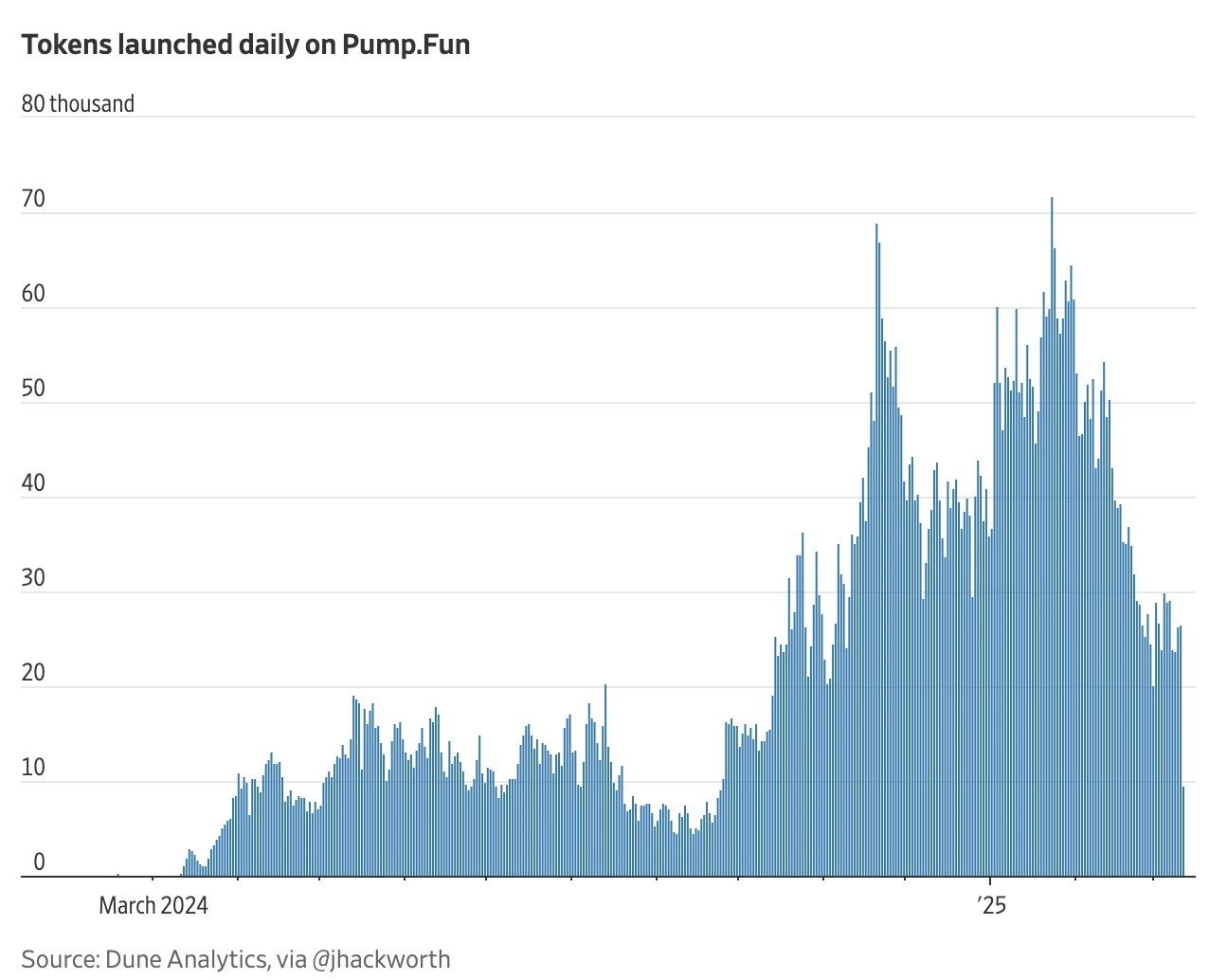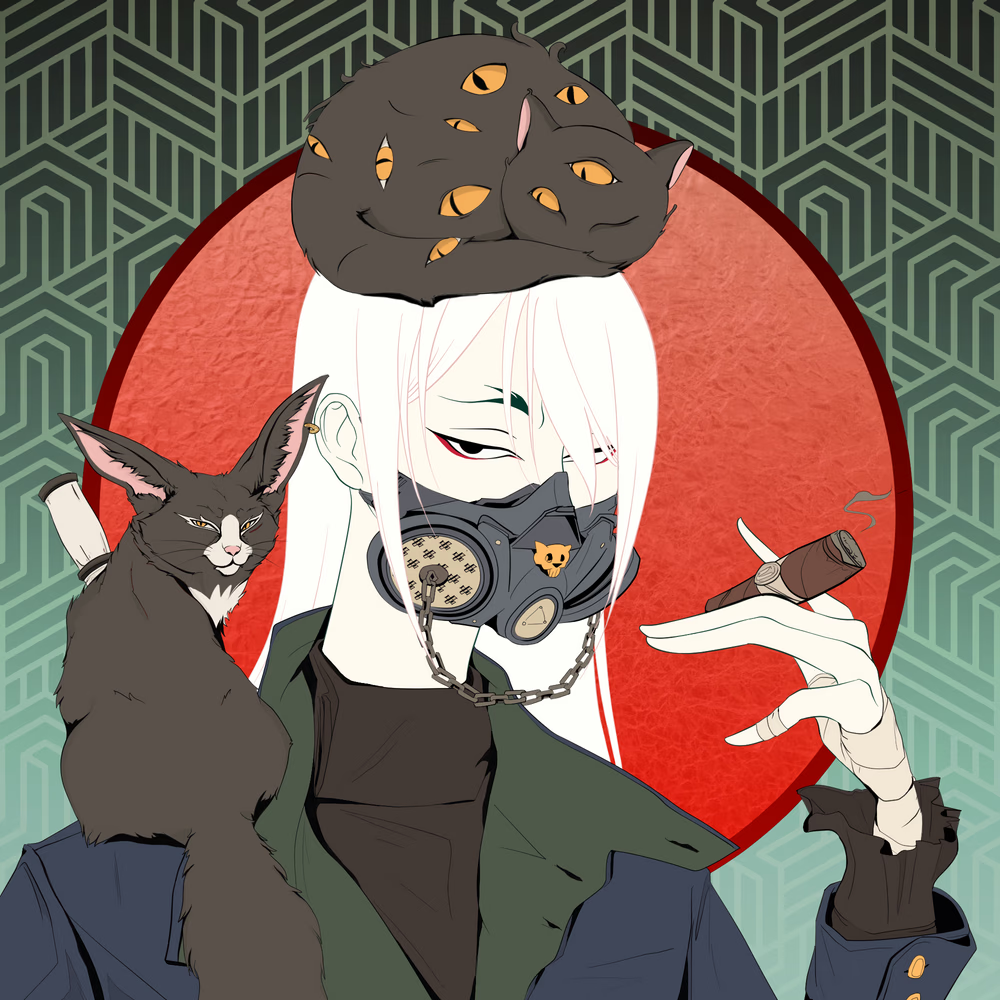Original source: The Wall Street Journal
Compiled by: Odaily Planet Daily ( @OdailyChina )
Translator: Wenser ( @wenser 2010 )

Editors note: As market liquidity becomes increasingly tight and attention resources become increasingly scarce, Meme coins have changed from an entertainment-first attention economy carrier and a hot news weathervane to a wave of entertainment-to-death, the ultimate PVP human amplifier. From the burn incident on pump.fun, to pornographic live broadcast tokens, to countless fast-passing and fast-fading insider trading, the Meme coin craze has gradually evolved into a massacre of retail investors by dealers and a siege of casino retail customers by a conspiracy group. And now, a 23-year-old California man has chosen to commit suicide because of the Meme coin scam, using his life to satirize and lash out at the cruel reality that everything can be Meme coins. This is his story, his name is Arnold Haro.
Tragedy in a corner of the crypto world: When suicide becomes a meme
A 23-year-old California man chose to end his life by shooting himself on live broadcast after experiencing a Meme coin scam.
At 3:28 pm on February 21, in a farm house in a remote corner of California, Arnold Haro was in extreme agony. He kept scratching his scalp, breathing heavily, and looked very painful. If I die, I hope you can turn me (suicide) into a Meme coin, he said to the fans who watched his live broadcast on the X platform.
About three hours later, facing the camera of his mobile phone, he first picked up a bullet, then calmly loaded it into the Smith Wesson pistol in his hand, and then turned the magazine - bang - a living life bid farewell to this world.
Later, his dying wish was fulfilled - a Meme coin named after Haros social media account soared to more than $2 million in market value, and then quickly collapsed, just like countless other Meme coins. Of course, this was not an isolated incident. A crypto gold rush ensued, and dozens of other copycat Meme coins emerged, some even using live screenshots as token logos, as the Meme coin community tried to grab their own share of the benefits from Haros suicide.
Meme coins originated from the rise of Dogecoin in 2013, a digital token designed to satirize the crypto world. Over time, an online subculture developed around the idea that any cultural moment can have its own cryptocurrency. Meme coins associated with celebrities, political leaders, and anonymous fringe figures flooded the market. They have no intrinsic value, but only hype the memes and related figures that are everywhere on the Internet.

Image credit: Silas Stein/DPA/Zuma Press
Meme coins have undoubtedly grown into a $2.8 trillion crypto market as cryptocurrencies soar, but they have also proven to be a hotbed of scams — a speculative world of bubbles and crashes where token creators make fortunes while others end up holding meme coins that briefly soar and then gradually return to zero. U.S. federal authorities consider meme coins entertainment rather than securities, which means that many of the protections enjoyed by investors in traditional assets do not apply here.
The creation of a meme coin based on the “death of Haro” showed the world the cruel side of the lack of boundaries in meme coins - a place where anything can become a meme coin - even a horrific suicide tragedy.
Arnold Haros sister, Maria Lucero Haro, said the family would not comment on Arnolds cause of death, but I dont want my brothers death to be anyones headlines or entertainment fodder.
Meme coins vanished in a flash after encountering Rug scam
As Haro got caught up in the vortex of Meme Coin, his life became more and more turbulent.
The 23-year-old’s crypto wallet shows that he has been an active trader of meme coins and NFTs since the summer of 2024, especially those on the Solana chain.
At the time of Haro’s death, the cryptocurrency market had been on a year-long rally. In January, Bitcoin hit an all-time high of $106,000, and crypto enthusiasts and the Trump administration heralded a future of crypto legitimization, with meme coins becoming a growing part of it, including Trump’s TRUMP token.
But there are so many “pump and dump” scams in Meme Coin that they have their own term — Rug pull. Haro experienced this endless stream of scams — Rug after Rug, which made his already poor life even worse.
He lived in a rural area outside Fresno, Calif., with his sister and mother, a house cleaner, and neighbors said they kept a low profile, while other family members viewed him as a goofball.
According to police records, he works in the solar energy industry and has a 1-year-old daughter with his ex-girlfriend, but they have long been separated. In addition, he owns 2 cars: a silver Ford F-150 pickup truck and a BMW X6 SUV. According to police records, his ex-girlfriend said that in addition to his normal work, he sold drugs such as fentanyl and methamphetamine to some homeless people near the riverside area. He himself is also a drug addict and had experienced a fentanyl overdose in 2020, which was so serious that he needed to learn to walk and talk again.
Under his account, MistaFuccYou, he always posts extreme memes and racist comments. He bragged about collecting guns, taking oxycodone, and being banned from a steakhouse for not tipping the waiter. After a video of him spinning in circles and vomiting went viral, he himself became a meme of sorts, known as 360 Vomit Guy by people on social media.
His personal social media accounts are filled with screenshots and related information about cryptocurrency losses.
He once asked a crypto influencer known for hyping Meme coins to return $8 simply because the person didn’t post enough content.
In January, he said he borrowed money to buy the token launched by President Trump and First Lady Melania Trump. “I promised my parents to get rich overnight by buying TRUMP tokens with a huge loan, and now it’s gone to shit,” Haro posted on January 19. “I just bought some MELANIA tokens, but with my luck, it’s probably not going to work out well either.”
Both meme coins fell sharply after a brief hype, with TRUMP falling 86% after a market cap of nearly $15 billion. Haro also bought a Trump copycat meme coin that quickly went to zero. On January 27, he privately messaged another crypto trader on X that he had lost his last $500 on a token suspected to be related to rapper Kanye West.

“ I tried to sell this token but couldn’t,” he wrote. It turns out the token had nothing to do with Kanye. A screenshot showed Haro’s loss as high as 35.9%.
Meanwhile, his involvement in the illegal drug trade seemed to be winding down. According to information his ex-girlfriend told police, Haro had sold two stolen cars to a Mexican drug dealer in exchange for large quantities of marijuana. He also told her that the dealer threatened to kill him. Haro was also upset to find out that his ex-girlfriend was seeing another man, according to police records. Arnold owed a lot of money to many people and he was very nervous and anxious about it, said a report summarizing the police interview with his ex-girlfriend.
No one can tell what led Haro to finally pull the trigger and choose to die, and police records do not include any last words or explanations from him.
When a death is monetized by a meme, who is the murderer?
When Haro’s ex-girlfriend checked her phone just after get off work, she saw the death video Haro had posted on the X account.
“I’m calling because my daughter’s father is live-streaming playing Russian roulette on his social media account,” she told the police operator at about 5:03 p.m., according to the recording and police records. “I don’t know if that’s true or not.”
At 5:43 p.m., police reported finding a male body with a gunshot wound to the head in Haros room. His mother was outside the house, crying hysterically, still unable to accept the fact.
Six days after Haros death, the U.S. Securities and Exchange Commission (SEC) issued a statement saying that meme coins created in Haros image were not a problem. Meme coins are often purchased for entertainment, social interaction, and cultural purposes, the agency said, comparing meme coins to collectibles. It was mainly speculation that fueled their value, the statement added.
In his final moments before his death, Haro requested that any Meme coins that appeared after his death be sent to his Solana wallet, according to an archived version of the video.
These Meme coins, which have now returned to zero, continue to haunt his family.
Meme coins related to Haro’s death surged on Pump.Fun, a website that allows users to quickly create meme coins, just as quickly as Tumblr creates a blog.

Some meme coins use still images taken from live broadcasts as their profile pictures, in which Haro has his eyes closed and a gun against his head.
Other meme coins used his X-platform avatar, or screenshots from his vomiting videos.
The most popular was a meme coin called MISTA, which soared to over $2 million in market value before plummeting by half in a day and is currently trading at around $80,000.
A spokesperson for Pump.Fun said in a statement, “Mr. Haro’s death is a tragedy and Pump.Fun had no role in this series of events other than as a provider of enabling the creation and issuance of clearly unethical, news-related crypto tokens.”
Some token creators claimed that they were raising funds for Haro’s family and sent tokens to Haro’s wallet, but it is unclear whether his family has access to these funds. The developer who created the MISTA token claimed to have donated $5,000 to the GoFundMe platform to cover Haro’s funeral expenses.
Please dont profit from our pain and my brothers death, said Haros sister, although these words now seem so helpless and powerless.










